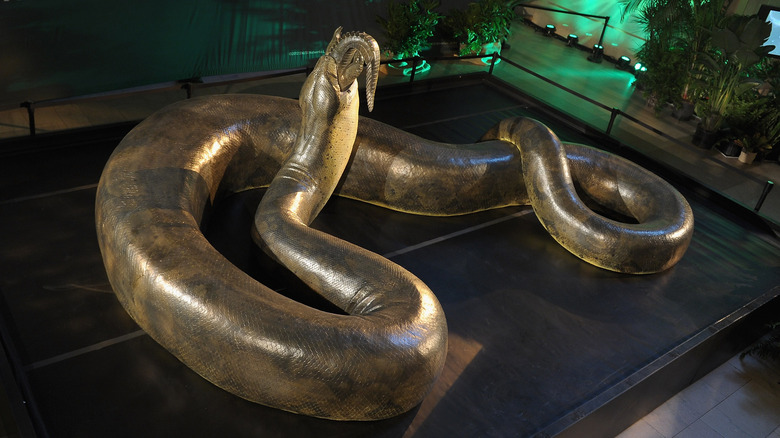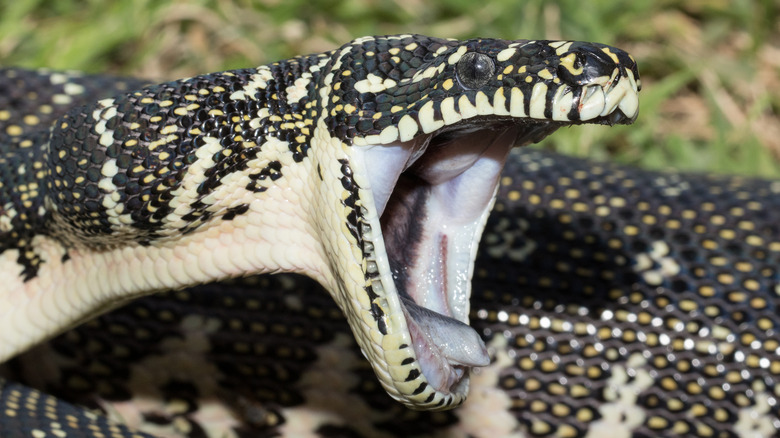Snakes come in various colors and sizes, and while even small ones slithering around can spark terror, the scare factor grows exponentially the larger they get. That’s why it’s so horrifying to think about the snake discovered in India being longer than a bus. Fortunately, the bus-long snake was no longer alive.
In 2005, scientists from the Indian Institute of Technology Roorkee uncovered the bones of what they thought was a prehistoric crocodile-like animal in Western India’s Panandhro Lignite Mine, a coal mine. When they finally started analyzing the remains in 2023, they realized that the preserved fossils actually belonged to “an exceptionally large snake,” the two authors wrote.
Among the 27 vertebrae was “an excellently preserved, partial vertebral column,” as the researchers reported in the journal Scientific Reports. From those bones, the scientists believe that this Vasuki indicus specimen was a giant madtsoiid snake that measured between 36 and 50 feet long, was broad around its middle, and potentially weighed 2,200 pounds. It likely lived on land in a coastal swamp area about 47 million years ago during the early-middle Eocene epoch. Also, the scientists speculate that the snake was a slow-moving predator that ambushed its prey like modern-day pythons and anacondas. However, this snake was much larger and more powerful compared to the longest recorded snake, a reticulated python that came in at more than 32 ½ feet in 1912.
Rivaling the size of Titanoboa

Snakes as we know them are already deadly animals that live in the rainforest, so it’s intimidating to consider the size of extinct animals from the Amazon rainforest. However, Vasuki isn’t the first remains of a giant snake that scientists have found.
In 2004, expeditions to Cerrejón in Colombia, one of the biggest open-pit coal mines in the world, led to the discovery of a 60 million-year-old fossilized species of snake that scientists were unaware existed. The preserved vertebrae of what they named Titanoboa revealed that this serpent was the dominant predator of the Paleocene epoch. According to a 2009 report in scientific journal Nature, the researchers estimated Titanoboa to have been about 42 ½ feet long and weigh about 2,500 pounds. Then, during the Smithsonian Channel’s 2012 documentary “Titanoboa: Monster Snake,” scientists were able to find fragments of three snake skulls, which are very rare because of their fragility, allowing them to predict the extinct giant’s appearance.
When recognizing that the largest size estimates would make Vasuki longer than Titanoboa “even though the vertebral dimensions … are slightly smaller,” the India-based researchers noted that they used two methods to determine the quantitative estimates of their specimen’s length. However, they advised others to use caution because they didn’t have a full skeleton to work with.

